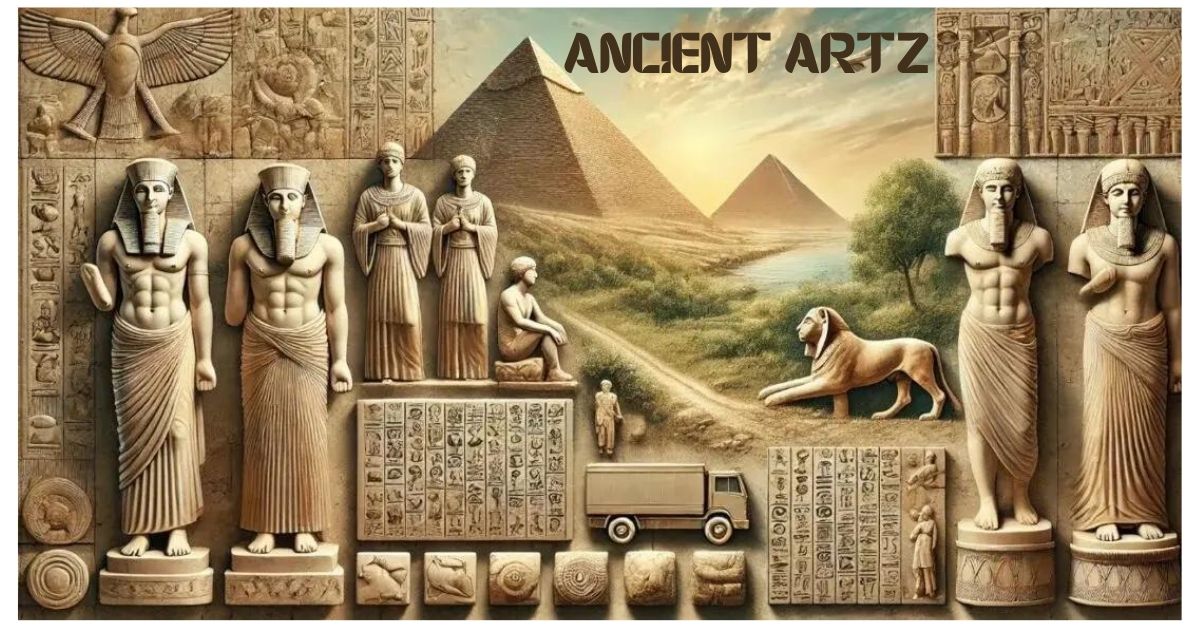Ancient art has always captivated human curiosity, revealing the intricate tapestry of history through its diverse forms and styles. From the grand murals of Egypt to the delicate ceramics of ancient Greece, these artworks offer a window into the cultures, beliefs, and lives of civilizations long past. This article explores the rich world of ancient art, delving into its significance, evolution, and enduring impact.
What is Ancient Art?
Ancient art encompasses artworks created by civilizations that existed before the fall of the Western Roman Empire. This includes a vast array of cultures from the Mesopotamians to the Chinese, each contributing unique styles and techniques. Ancient art serves as a crucial record of historical and cultural evolution, offering insights into the values, rituals, and daily lives of early societies.
The Purpose of Ancient Art
Art in ancient times was not just for aesthetic pleasure; it often served specific functions within its culture. For example, in ancient Egypt, art was deeply intertwined with religion and the afterlife. Tomb paintings and sculptures were intended to ensure a prosperous afterlife for the deceased. In contrast, ancient Greek art celebrated human achievements and was frequently associated with public spaces and athletic competitions.
Ancient Egyptian Art: A Glimpse into Eternity
Ancient Egyptian art is renowned for its distinctive style and symbolic significance. The use of hieroglyphs, vivid colors, and rigid poses reflects the Egyptians’ focus on the afterlife and the divine. Statues of gods and pharaohs, intricate wall paintings in tombs, and ceremonial artifacts all played a role in ensuring continuity between the mortal world and the divine realm.
Mesopotamian Art: The Cradle of Civilization
Mesopotamian art provides a glimpse into one of the earliest urban civilizations. Artifacts like the Stele of Hammurabi and the Ishtar Gate showcase the advanced craftsmanship and complex societal structures of Mesopotamia. The art often depicted royal achievements and religious themes, highlighting the importance of law, governance, and worship in their society.
Ancient Greek Art: Celebrating Humanism and Beauty
Greek art is celebrated for its emphasis on realism and humanism. The Greeks mastered the art of sculpture, creating lifelike representations of the human form that conveyed both physical beauty and inner virtue. Their pottery and architecture, exemplified by structures like the Parthenon, reflect their values of balance, proportion, and harmony.
Ancient Roman Art: A Blend of Tradition and Innovation
Roman art inherited much from Greek precedents but added its own innovations. The Romans excelled in realism, evident in their detailed portraiture and realistic frescoes. Their contributions to architecture, including the development of concrete and the construction of aqueducts and amphitheaters, showcase their practical and aesthetic advancements.
Ancient Chinese Art: Harmony and Symbolism
Chinese art, with its long history, is characterized by its emphasis on harmony and symbolism. From the intricate jade carvings of the Shang Dynasty to the porcelain of the Ming Dynasty, Chinese art reflects the philosophical and spiritual ideals of Confucianism, Taoism, and Buddhism. Traditional Chinese painting and calligraphy also emphasize the importance of nature and personal expression.
Indian Art: Spiritual and Secular Themes
Indian art is known for its rich spiritual and secular themes. The art of ancient India, including Hindu temples, Buddhist stupas, and Jain cave paintings, often features elaborate iconography and narratives from religious texts. The art serves both devotional purposes and provides insights into the social and cultural life of the period.
Mesoamerican Art: Ritual and Cosmology
Andean Art: The Legacy of the Incas
In the Andean region, the art of the Incas and their predecessors, such as the Moche and Nazca, is notable for its craftsmanship and symbolism. Textiles, pottery, and metalwork reflect the importance of ritual, status, and the natural environment. The quipu, an intricate system of knotted cords, served as a method of record-keeping and communication.
The Influence of Ancient Art on Modern Times
Ancient art has left a lasting impact on contemporary art and culture. Renaissance artists drew inspiration from classical Greek and Roman art, reviving techniques and themes. The principles of balance and proportion from ancient art continue to influence modern design and architecture. Moreover, ancient art provides valuable lessons in cultural appreciation and historical continuity.
Preserving Ancient Art: Challenges and Efforts
Preserving ancient art is a significant challenge due to factors like environmental degradation, war, and looting. Efforts by archaeologists, historians, and conservationists aim to protect and restore these priceless artifacts. Advances in technology, such as digital imaging and 3D reconstruction, also aid in the preservation and study of ancient art.
The Future of Ancient Art Research
The study of ancient art continues to evolve with new discoveries and methodologies. Ongoing archaeological excavations and technological innovations promise to uncover more about ancient civilizations and their artistic practices. This research not only enriches our understanding of history but also enhances our appreciation of the diverse expressions of human creativity.
Conclusion
Ancient art remains a profound testament to the creativity and beliefs of past civilizations. From the grandeur of Egyptian tombs to the delicate beauty of Chinese ceramics, these artworks offer invaluable insights into the lives and cultures of ancient peoples. As we continue to study and preserve these masterpieces, we honor the legacy of humanity’s artistic heritage and gain a deeper appreciation for our shared history.
FAQs
What is the significance of ancient art?
Ancient art provides insights into the cultural, religious, and societal practices of early civilizations. It helps us understand their values, beliefs, and daily lives.
How does ancient Greek art differ from ancient Roman art?
Greek art emphasizes realism and humanism, focusing on the idealized human form. Roman art incorporates Greek influences but adds a focus on realism and practical achievements, such as architectural innovations.
What materials were commonly used in ancient Chinese art?
Ancient Chinese art utilized materials like jade, silk, porcelain, and bronze. Each material had symbolic and practical significance in various art forms.
How has ancient art influenced modern design?
Ancient art principles, such as balance, proportion, and harmony, continue to influence modern design and architecture, reflecting timeless aesthetic values.
What are the main challenges in preserving ancient art?
Challenges in preserving ancient art include environmental factors, vandalism, and looting. Conservation efforts and technological advancements are crucial in addressing these issues.







